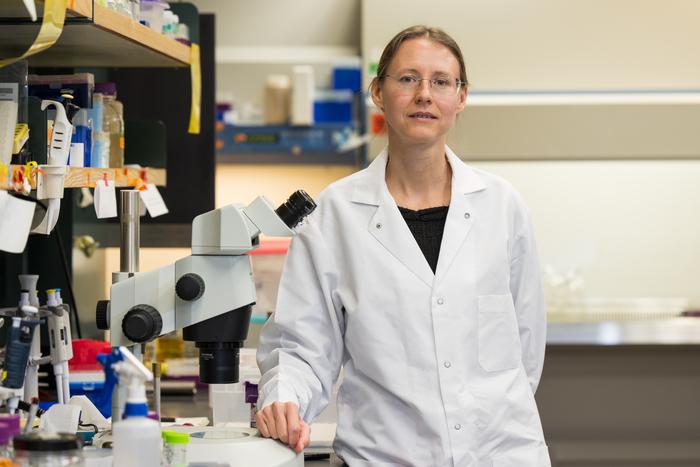Acute myeloid leukemia (AML) represents one of the most formidable challenges in contemporary oncology due to its aggressive nature and remarkable resistance to existing therapies. Traditional treatment modalities such as high-dose chemotherapy and allogeneic bone marrow transplantation have prolonged survival for some patients, yet the overall prognosis remains poor, primarily because of the high rate of relapse driven by drug-resistant leukemic clones. In light of these therapeutic limitations, a pioneering research team led by Dr. Natasha Kirienko at Rice University is exploring innovative strategies that harness the unique metabolic vulnerabilities of AML cells, focusing particularly on their mitochondrial function.
Mitochondria, often described as the powerhouses of the cell, generate adenosine triphosphate (ATP) through oxidative phosphorylation, supplying the energy required for cell proliferation and survival. AML cells exhibit aberrant mitochondrial dynamics and bioenergetics, due in part to the heightened metabolic demands posed by their rapid proliferation. Dr. Kirienko’s research has revealed that these cancerous cells impose an unsustainable burden on their mitochondria, leading to a breakdown in mitochondrial quality control mechanisms. This mitochondrial dysfunction presents an exploitable weakness: by precisely targeting these defective energy factories, it is possible to selectively induce apoptosis in AML cells while sparing healthy hematopoietic cells.
The foundation of this approach builds on Dr. Kirienko’s extensive expertise in mitochondrial metabolism and cellular stress response pathways. Her laboratory’s recent work, supported by a highly competitive Cancer Prevention and Research Institute of Texas (CPRIT) High Impact/High Risk grant, aims to leverage this mitochondrial vulnerability as a therapeutic entry point. The overarching goal is to develop drugs that disrupt mitochondrial function in AML cells, crippling their energy production, and triggering cell death with minimal collateral damage to normal tissues.
.adsslot_7DKAVGmJck{ width:728px !important; height:90px !important; }
@media (max-width:1199px) { .adsslot_7DKAVGmJck{ width:468px !important; height:60px !important; } }
@media (max-width:767px) { .adsslot_7DKAVGmJck{ width:320px !important; height:50px !important; } }
ADVERTISEMENT
Collaborating closely with international and interdisciplinary experts, this project integrates the clinical insights of Dr. Natalia Baran, a leukemia specialist at University Hospital Bern in Switzerland, and the chemical biology proficiency of Dr. Scott Gilbertson, Professor of Chemistry at the University of Houston. Their collective expertise facilitates an innovative drug development pipeline that spans from molecular design and synthesis to functional assays using patient-derived AML samples. By incorporating genetic profiling to understand the heterogeneity in mitochondrial vulnerabilities across different AML subtypes, the team is moving beyond a generic “one-size-fits-all” paradigm toward personalized treatment regimens.
Dr. Baran emphasizes the significance of tailoring therapies based on the mutational landscape of each patient’s leukemia. The diversity among AML genomes means that drug responses can vary dramatically, underscoring the necessity of a precision medicine approach. This strategy involves screening patient-specific AML cells against candidate mitochondrial inhibitors to determine optimal drug combinations that maximize efficacy and minimize toxic side effects, thereby raising the therapeutic index.
Preclinical validation is a critical component of the research effort. The team employs murine xenograft models in which mice are engrafted with human AML cells to create a living system that closely recapitulates the human disease milieu. These in vivo models enable the researchers to evaluate not only the efficacy but also the pharmacokinetics and toxicity profiles of emerging mitochondria-targeting agents before advancing to clinical trials. Dr. Gilbertson highlights the indispensable nature of these translational studies, noting that in vitro assays alone cannot fully predict a compound’s behavior in complex biological systems.
Moreover, the approach seeks to surmount the challenge of drug resistance, a pervasive problem in AML treatment. Targeting mitochondrial dysfunction may incapacitate alternative metabolic pathways that leukemic cells activate to survive conventional therapies. This dual attack on cancer bioenergetics and metabolism could prevent or delay the evolution of resistant clones, thereby improving long-term patient outcomes.
A crucial element of this work is the broader implication for oncology. While AML serves as the primary focus, mitochondrial dysfunction is increasingly recognized as a hallmark of various cancers, including solid tumors that evade conventional therapeutics. The insights gained from this project could catalyze the development of a novel class of anticancer agents with efficacy extending beyond hematologic malignancies.
Dr. Kirienko articulates a vision of therapy that not only extends survival but enhances the quality of life by reducing treatment-related toxicity. Conventional AML therapies are notorious for their debilitating side effects, prompting many patients to endure prolonged hospitalizations and compromised immune function. By contrast, mitochondria-focused drugs have the potential to be more selective and less damaging to normal cells, thus mitigating these adverse effects.
The implications for patient care are profound. Annually, thousands of individuals in Texas alone receive a leukemia diagnosis, many confronting the stark reality of relapse or resistance to current treatment regimens. The development of safer, more effective therapeutics could transform these grim statistics, instilling hope among patients and clinicians alike.
As the team progresses, their research continues to illuminate the finely balanced choreography of mitochondrial function, cancer metabolism, and cellular stress. Their approach exemplifies a cutting-edge blend of basic science, translational research, and clinical insight, paving the way for paradigm-shifting cancer therapies.
In summary, by turning the cancer cells’ own energy generators into their Achilles’ heel, Dr. Kirienko and her collaborators are charting a visionary path toward precision oncology. The convergence of mitochondrial biology and targeted therapy heralds a new frontier in the fight against AML and possibly other refractory malignancies, signifying a beacon of hope for patients facing these devastating diseases.
Subject of Research:
Mitochondrial dysfunction as a therapeutic target in acute myeloid leukemia (AML)
Article Title:
Turning Mitochondria Against Acute Myeloid Leukemia: A Paradigm Shift in Cancer Therapy
News Publication Date:
Not specified
Web References:
https://profiles.rice.edu/faculty/natasha-kirienko
https://www.cprit.texas.gov/grants-funded/grants/rp250573
https://cprit.texas.gov/
Image Credits:
Jeff Fitlow/Rice University
Keywords:
Acute myeloid leukemia; AML; Cancer metabolism; Mitochondria; Targeted therapy; Drug resistance; Personalized medicine; Translational research; Cancer therapeutics
Tags: acute myeloid leukemia treatmentapoptosis in leukemia cellsbioenergetics in AMLchemotherapy resistance in leukemiaDr. Natasha Kirienko researchdrug-resistant leukemia challengesinnovative leukemia therapiesleukemia cell proliferationmetabolic vulnerabilities of AMLmitochondrial function in cancermitochondrial quality control mechanismstargeting mitochondrial dysfunction





